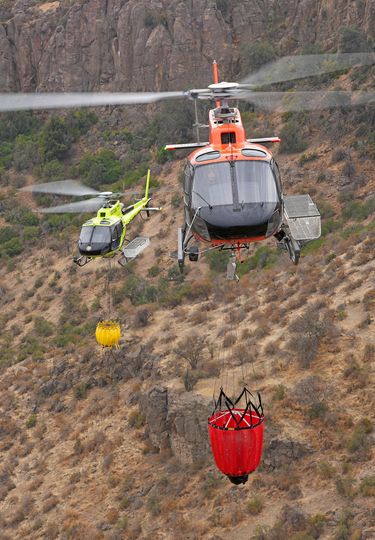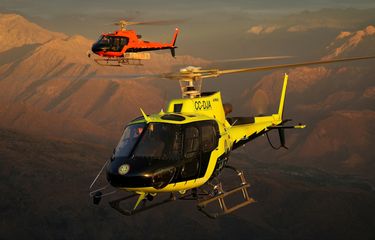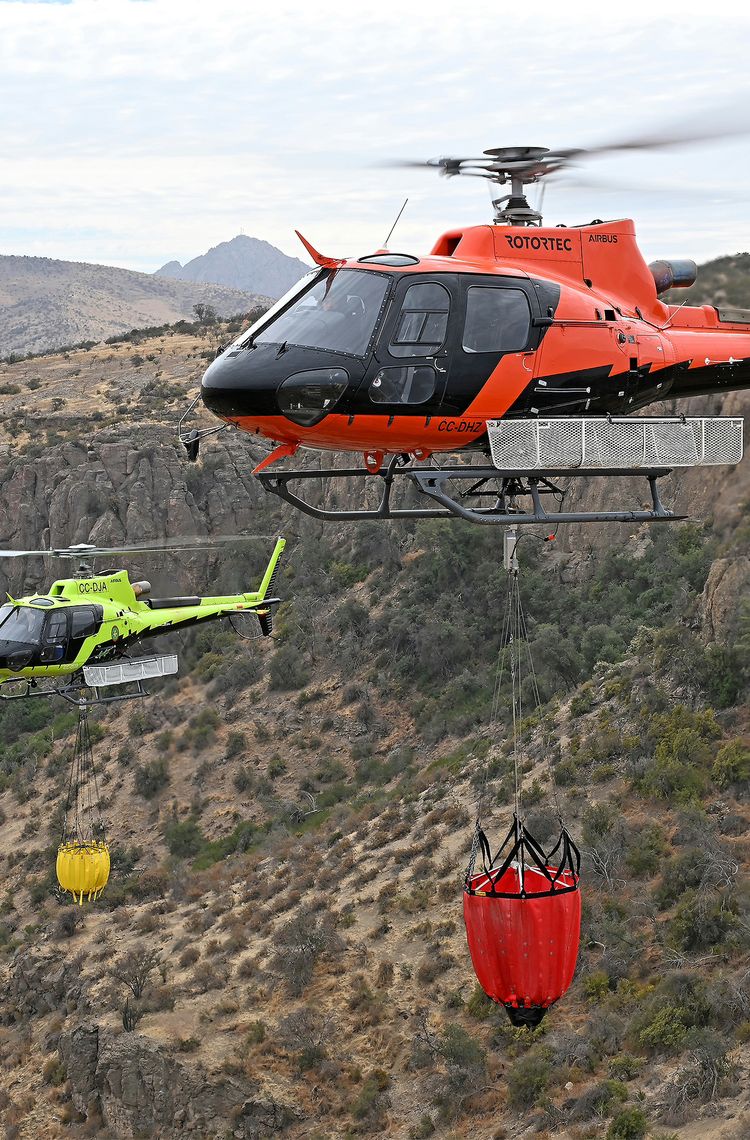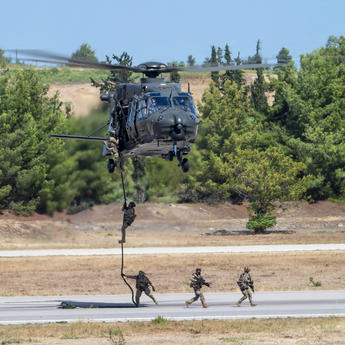If firefighting is by itself one of the most demanding helicopter missions, doing it at very high altitudes is something only a few can talk about. Rotortec, a Chilean H125 operator dedicated to seasonal firefighting, shares their experience of a particularly tough year for Chile.
In Chile, as in many other countries, climate change has generated drier, hotter and more unpredictable conditions that increase both the number and intensity of fires. Since the start of 2023, more than 5,300 forest fires have been recorded in Chile. One of them, the Valparaíso fire in February, was the deadliest in the country's history, destroying more than 8,600 hectares and more than 4,500 homes in several municipalities.
More aggressive fires
"In Chile we are used to forest fires, unfortunately it is something that is already part of our country because of its geography and weather conditions," explains José Tomás García, H125 pilot at Rotortec. "But what marked this fire season was that this year the fire reached the big urban centres, burning down many houses and causing the loss of many lives
With a fleet of four H125s, Rotortec has flown more than 400 hours this summer season putting out fires. Its main task has been direct firefighting by dropping water or retardant on the flames, but it has also carried out other essential, highly technical flight tasks such as the aerial coordination of ground resources or the transport of brigades to the scene of the fire.

Fires at high altitude
Rotortec’s H125s are all equipped with water buckets, a Heli-Basket and a cargo hook with load indicator. They have FM radio equipment to communicate directly with the fire brigades on the ground, and a siren to alert them when each discharge is about to take place to protect their safety.
"The H125 is very responsive, with a power margin that no other helicopter has, especially when fighting fires at higher altitudes, which is a frequent occurrence in Chile," explains Francisco Fluxá, General Manager of Rotortec and also a pilot with more than 4,000 hours under his belt. "We operate firefighting missions mainly between December and March, which is the most complicated time of the year. We move from the central zone to the southern zone, in the lake region, where there are native forests above 5,000 feet.”

Reaching where others cannot
It was precisely in the south of Chile, in the Araucanía region, where Rotortec had to face one of the worst fires this year. "We had a major fire in Lonquimay, which was characterised by the fact that it was in a native Araucaria forest: a tree can burn for weeks, because they burn inside and underground. It was exhausting. Our biggest advantage was definitely having the H125 because the fire was above 5,000 feet and the water sources were between 5,000 and 6,000 feet. Our helicopters were the only ones that could efficiently draw water from the lagoons at altitude to have faster drop cycles. The H125 could deliver 800 litres of water every two minutes versus every 10 minutes for helicopters with fewer capabilities that had to go down to 3,000 feet to retrieve water.”
On his side, Francisco stresses that the H125's versatility is another asset for the company. "We make use of it all year round. Already in winter, outside the fire season, we can use it for aerial work, in the agricultural area or for passenger transport. And we are always at the service of the rescue services for mountain rescues, natural disasters, floods... Chile is a country with very high mountains and the H125's capabilities are wonderful here."






